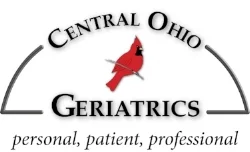By John M. Weigand, M.D.
Director of Geriatric Services
Central Ohio Geriatrics
This month, Dr. Weigand continues his series about immunizations with the second of four articles about vaccines and how they protect us against disease. Please see our COG Blog archive for previous articles. Subsequent immunization articles are:
October: Influenza vaccine
November: Shingles (Zoster) vaccine
Between July and December 2012, the recommendations of the Advisory Committee on Immunization Practices, or ACIP, will be reviewed and summarized for adults, especially those 65 and older.
Each year the ACIP reviews the recommended schedule of adult immunizations to ensure it reflects the most current knowledge for licensed vaccines.
Pneumococcal Polysaccaride (Pneumonia) Vaccine
Background
Streptococcus pneumoniae (Pneumococcus) is the leading cause of morbidity and mortality among children worldwide and particularly in developing countries. It is estimated that 10.6 million children younger than 5 present with pneumococcal disease annually. The most common form of disease is bacterial pneumococcal pneumonia with the peak incidence occurring with the extremes of aging (children younger than 2 and adults older than 65). Other possible infections include pneumococcal meningitis (mostly in infants and young children), infection in the bloodstream known as sepsis (all ages) and ear infections (children).
The emphasis on vaccination of adults in the United States is targeted at prevention of pneumococcal pneumonia, which accounts for approximately 30% of all community-acquired pneumonias admitted to the hospital and has a case fatality rate of 11-44%. Pneumococcal pneumonia is suspected to be an underappreciated cause of infections contracted in hospitals as well as nursing homes and long term care facilities. Important risk factors are age, chronic heart and lung disease, cigarette smoking and asplenia (lack of a functioning spleen – most commonly because of surgical removal after trauma or as treatment for blood-borne conditions). While pneumococcal pneumonia is not the only type of pneumonia found in the elderly (influenza is more common in the United States), it can occur as a secondary complication of influenza infections in 15% of cases.
The current Streptococcal pneumoniae vaccines are based on the use of a portion of the bacterial cell wall called polysaccharide, which stimulates antibody response (immune response) when the person is exposed to pneumococcus in the future. Currently two vaccines are in common use in the United States with good antibody responses in 60-80% of healthy adults following a single injection. Generally, pneumococcal polysaccharide 23 vaccination (PPV23), known as either Pneumovax or Pneumo 23TM, is given to adults in the United States. In one study, PPV23 was estimated to be effective 61% of the time in healthy adults, but only 21% of the time in immunocompromised (because of cancer, diabetes, chronic illness, HIV) adults. It is still recommended nonetheless because of the low side-effect profile, potential prevention of life-threatening disease and secondary “herd immunity.” Herd immunity is a phenomenon that describes the limiting of an infection’s risk if everyone (the herd) is immunized against it, as opposed to just a few individuals. Herd immunity has been observed in the United States since 2000 when children began being immunized against pneumococcal disease using the other vaccine, commonly known as Prevnar, which elicits a different type of immunity. In fact, a 30% reduction in pneumococcal disease has been seen in unvaccinated individuals older than 65 since the introduction of Prevnar immunizations in children because of herd immunity.
Recommendation
The following individuals should be vaccinated with pneumococcal polysaccharide (PPSV):
• All persons 65 and older without a previous history of PPSV vaccination
• Adults younger than 65 with one or more of the following conditions:
Chronic lung disease (asthma, COPD, cystic fibrosis, pulmonary fibrosis, etc.)
Chronic cardiovascular diseases (coronary artery disease, congestive heart failure, atrial
fibrillation, etc.)
Diabetes mellitus
Chronic liver disease (cirrhosis, hepatitis, etc.)
Alcoholism
Immunocompromising conditions (cancer, chemotherapy, chronic steroid use, HIV)
Functional or surgical aspenia (sickle cell anemia, splenic dysfunction, splenectomy)
• Cigarette smokers
• Adults living in a nursing home or long term care facility
• Adults with asymptomatic or symptomatic HIV infection
•An adult who received a PPSV before the age of 65 should receive another dose of the vaccine at 65 or later if at least 5 years have passed since the previous dose.
Note: When cancer chemotherapy is being considered, the interval between PPSV vaccination and the beginning of chemotherapy should be at least 2 weeks. Vaccination during chemotherapy or radiation therapy should be avoided.
No further doses of PPSV are needed for individuals vaccinated at or after 65 years of age.
Sources
Recommended Adult Immunization Schedule – United States, 2012. JAMA, July 4, 2012, Vol 308, No. 1. Pg 22-27.
Acute Respiratory Infections (Update September 2009), www.who.int/vaccine_research/diseases/ari/en/index3.html
